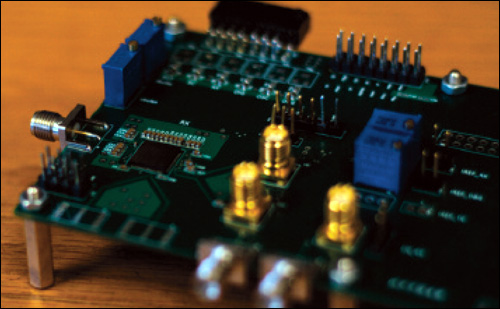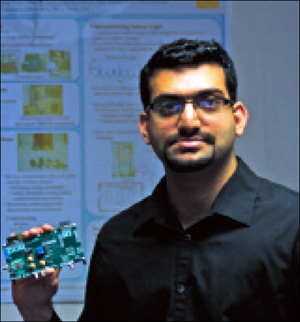There’s a lot of talk about the Internet of Things, but researchers at New York’s Columbia University have a different vision of the future. In their view, objects won’t communicate with the Internet but rather with each other. And they are creating low-power active devices that will enable this to happen.
The collaborative research project is called Energy-Harvesting Active Networked Tags. EnHANTs are small, flexible devices that gather energy from light, vibration or other environmental sources. The goal is to make these devices inexpensive, so they can be attached to items, such as books, clothing, toys, furniture and maybe even produce.

The key to EnHANTs is to be able to transmit up to 30 feet (9 meters) without consuming much energy, says Baradwaj Vigraham, a Columbia doctoral student working on that challenge with Peter Kinget, a professor of electrical engineering. They have created a wireless transceiver that uses ultra-wideband communication methods to send short pulses or bursts of information. The device can, for example, communicate 2 megabits of data per second by sending 3- to 4-nanosecond pulses every half-microsecond.
“Because you are communicating in bursts, up to 95 percent of the time between pulses, the electronics can be shut down to save power,” Vigraham says. The prototype is a system-on-chip (SoC) design, which means most of its functionality is built into the microchip, as opposed to having several components on a circuit board.
Other collaborators are working on energy-harvesting devices or communication protocols and data-routing algorithms that will enable the devices to form mesh networks. So instead of wandering around your house using a handheld reader to search for your missing black sock, you might one day be able to message a network of all the objects in your home that you are looking for that sock, and those objects might be able to communicate with one another until they locate the sock and message back that they found it under the bed.
Vigraham presented a paper on the device at the IEEE International Solid-State Circuits Conference meeting in February. “I’m an academic, so I haven’t thought much about the commercial possibilities,” he says. “But there are certainly many potential applications.” In addition to finding household items, it could be used to track anything, from airline baggage to IT equipment in large buildings.


